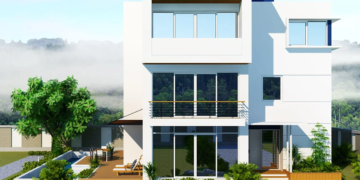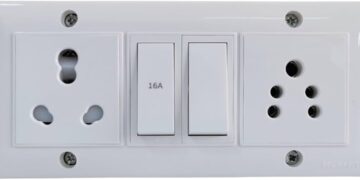A good lawn is like a good visit card. It will attract people and make them want to visit your home. If you want to add value to your home, both economically and aesthetically, then a lawn is a great idea. However, you need to invest a little bit to get some results, and this is why you should consider getting quality grass for your lawn. The following article contains everything you need to know about making the right choice for your lawn.
Should you choose humid or arid grasses?
The USA has a very diverse climate, so this will depend on where you live. Let’s remind you of the main climates in the USA:
● Northeast
● Midwest
● Southeast
● Deep South and Gulf Coast
● Southwest
● Pacific Northeast
● Transition Region
Each one of these regions has some peculiarities and not all the grass types are suitable for each one of them. Humid grass will be more suitable for southern regions because they receive less rainfall, while arid grasses will be better for some rainy regions.
To sum it up, explore the best grass type according to your climate and choose accordingly.
Should you choose warm season or cold season grasses?
The main problem with the warm season plants is that they become brown during their dormant phase which typically occurs during lower temperatures in winter. It means that they won’t serve their aesthetic purposes in that period. It is better to seed some cool season grass during colder months.
Warm season grass is more suitable for hot climates where winters are mild and with no snow and very cold weather. Since those areas are usually arid, make sure you maintain your lawn property with a good retractable garden hose. Cold season grass is suitable for regions with cold winters and hot summers and requires a bit less watering.
As always, the Transition zone is the most versatile area, so you can have more options if you live between the North and the South.
Warm season grass in a humid climate
The main types are the following:
l Bermudagrass
l St. Augustinegrass
l Zoysia Grass
l Buffalograss
l Centipedegrass
l Bahiagrass
Let’s give some further insight on each one.
Bermuda grass is dormant during winter and you should overseed it with ryegrass to maintain the green color. This type enjoys the sun and responds well to watering. There are drought tolerant varieties such as Common Bermuda, Celebration, GN1, Grimes EXP, TifSport, and Tifway 419.
St. Augustinegrass is very versatile, stays green during winter, but requires a lot of watering and nurture. Floratam is its best drought-resistant variety.
Zoysia Grass grows a bit slowlier, but it gives you a luscious lawn. Recomendable drought tolerant varieties are El Toro, Empire, Jamur, and Palisades.
Buffalograss is more for Midwest areas than southern regions. It is generally tolerant to drought, and sun-loving and requires little watering.
Centipedegrass is low maintenance, slow-growing grass that prefers either full sun or partial shade.
Bahiagrass has great tolerance and insect resistance. It’s a very versatile species.
Warm season grass in an arid climate
The main types are Bermuda and Buffalo grass.
Bermuda grass is suitable for both arid and humid climates. It’s very resistible due to its sturdy root. However, it is less drought tolerant than Buffalo grass, so if you live in a very arid zone, Buffalo is a better choice. Both species require sun and very little shade.
Cold season grass in a humid climate
The most famous types are:
l Kentucky Bluegrass
l Ryegrass
l Tall and Fine Fescues
Let’s give some more details about them.
Kentucky Bluegrass has the following characteristics:
l lawn grass for the cool months.
l Suitable from coast to coast for northern lawns.
l superb resistance to the winter.
l Some types are heat- and drought-sensitive.
l limited tolerance for shade.
l Excellent ability to repair oneself.
Ryegrass is excellent if you need some of the following for your lawn:
l Long life
l Rapid establishment
l Coarse texture
l Dense growth habit
l Highly adaptable
Tall and Fine Fescues have the following characteristics:
l shade tolerance
l drought resistance
l staying green all year
l easy to establish via seed
Cold season grass in an arid climate
We have two main types in this category and they are Canadian Bluegrass and Wheatgrass.
Canadian Bluegrass is a bunchy sod that can flourish in unfavorable environments, including infertile and shallow soils. It’s enduring and a great option for preventing erosion.
Wheatgrass is perennial, drought resistant, and suitable for small home gardens, due to its price.
In conclusion, your ideal lawn grass will depend on the climate conditions of the region where you live. Different types of grass are suitable for different regions whether that region is humid or arid, or cold or hot. Choose some of the aforementioned species based on their descriptions and make sure they are easy to maintain.














